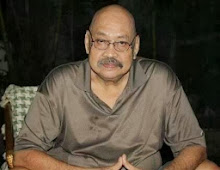Chessmoso
Thursday, December 19, 2013
WHEN Nelson Mandela died last Dec. 5 at the age of 95, it was front page headline all over the world.
He emerged after 27 years in prison in 1990 to lead his country out of decades of apartheid. He served as president of South Africa from 1994 to 1999. His government focused on dismantling the legacy of apartheid, racism, poverty and inequality.
He received the 1993 Nobel Peace Prize, the US Presidential Medal of Freedom, the Soviet Order of Lenin, the Bharat Ratna and more than 250 honors in his lifetime. He is held in deep respect within South Africa, where he is often described as “the father of the nation.”
“He achieved more than could be expected of any man,” said Obama who became president of America because of Mandela’s legacy. “We’ve lost one of the most influential, courageous and profoundly good human beings that any of us will share time with on this Earth. He no longer belongs to us -- he belongs to the ages.”
As a man,he had all the qualities of a good chess player, which he was, like patience, creativity and imagination.
Mandela turned to chess to pass the time during his more than 27 years as a political prisoner. Fellow detainees at the country’s notorious Robben Island prison recall him as a good player who favored a strategy of “attrition” to wear down opponents.
“He would take his time with every move, he would consider it very carefully,” recalled Neville Anderson, a fellow detainee who often played with him. “He would sort of mislead the other person by pointing things this way, that way, the other, and then making the move that wasn’t expected and so on.”
Current South African President Jacob Zuma, a good player himself and a fellow detainee , recalled the way they had to improvise just to play chess. “We made chess sets out of soap and driftwood and makeshift chessboards that allowed us to continue
to play this noble and great game,” Zuma said .
to play this noble and great game,” Zuma said .
In 1996,Mandela gave a chess set to Queen Elizabeth, a chess player herself, during a state visit that featured Zulu tribesmen.
In 1977, South Africa was banned from Fide events because of its apartheid practices.
The ban was lifted in 1992 by Florencio Campomanes and that allowed South Africa to play in the Manila Olympiad.
Tournaments. The 2013 Cepca grand champion is Tacloban City-born civil engineer Jimmy Ty, who defeated Peterson Sia in the finals. Third placer is Percival Fiel and the fourth placer is Manuel Abucay.
The results were a big surprise to all of us as the favorites were last year’s champion Rey Flores, Romy Pialan, Jomgjong Melendez and Maggi Dionson.
In the non-qualifiers category, the winner was Carlo Maraat, as expected. I even wondered why he did not make it to the grand finals. Both winners were awarded unique trophies fabricated by Dr. Ronald Galindo, the coordinator of the USC college of engineering.
The Deep Blue “D” Woodpushers Club will sponsor a Christmas Tournament for kiddies and open division tomorrow and Sunday at the second level of SM City Cebu.
The format is seven rounds Swiss and the time control is 25 minutes plus five-second increments to finish the game. The tournament is supported by lawyer Mariano Tan, CPA Nestor Encallado, Molet Hortelano and Vizmin Marketing.
The top four kiddies players will go home with P1,200, P800, P600 and P400, respectively. In the open category the top four finishers will get P3,000, P2,000 ,P1,000 and P500. The fifth to the 10th finishers will get a consolation prize of P200 each.
The registration fee for the Open players is P150 and P100 for the Kiddies players. For more information contact FA Marvin Ruelan 09267352951
(boypestano@gmail.com,www.chessmoso.blogspot.com.)
